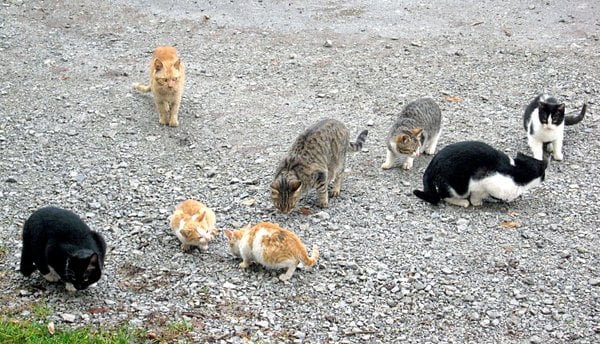



Impoundment fails to resolve the inciting factors for nuisance situations: if cats are simply impounded, community members may not be motivated to identify and remedy factors such as open garbage containers that may be attracting cats as well as nuisance wildlife.therefore removing adult cats and destabilizing population age structures further increases risks to the environment.toxoplasmosis, Toxocara cati, Ancylostoma spp.), Kittens pose a greater risk than adult cats for shedding and spreading parasites with wildlife and/or public health implications (e.g.Removal of cats without concurrent control of the food source has been linked to paradoxical increases in cat populations by as much as 200%. Impoundment has the potential to increase cat populations and impact: The haphazard removal of individual cats is not population management.Only ~40 % of people in the lowest income bracket ( $90% reunited for those making $50,000 or more per year.population), suggesting that impoundment is likely to be a one way journey for pets belonging to low income community members. Only 16% of participants in a program supporting low income pet owners have ever called or visited an animal shelter, and only 3% of pets in the same demographic were adopted from a shelter (compared to 30-40% for the general U.S.Impoundment of healthy adult cats may disproportionately impact under-served and marginalized communities.A family may not consider their free-roaming cat lost until the point when the cat is removed from the neighborhood and transported to a shelter. In fact, the most successful reunification method for cats is the cat returning home on its own. Lost cats are 10-50 times more likely to be reunited with their owners if they stay in the neighborhood of origin than through an animal shelter. Impoundment of healthy adult cats reduces the likelihood of reuniting families with pets:.It is the position of NACA that indiscriminate pick up or admission of healthy, free-roaming cats, regardless of temperament, for any purpose other than TNR/SNR, fails to serve commonly held goals of community animal management and protection programs and, as such, is a misuse of time and public funds and should be avoided. It is the position of the National Animal Care & Control Association that, at every opportunity, officers should work to educate the public regarding humane and responsible co-existence and care of pet and community cats, to include education on the benefits and resources for spay/neuter and vaccination responsible feeding and management practices for those choosing to care for community cats and effective methods to humanely deter and exclude animals from homes, structures and targeted areas. Animal Control Intake of Free-Roaming Cats


 0 kommentar(er)
0 kommentar(er)
